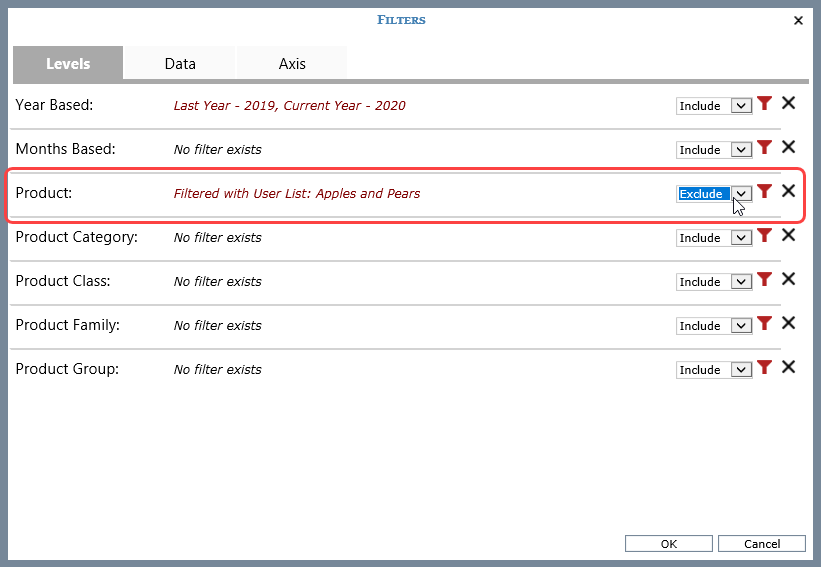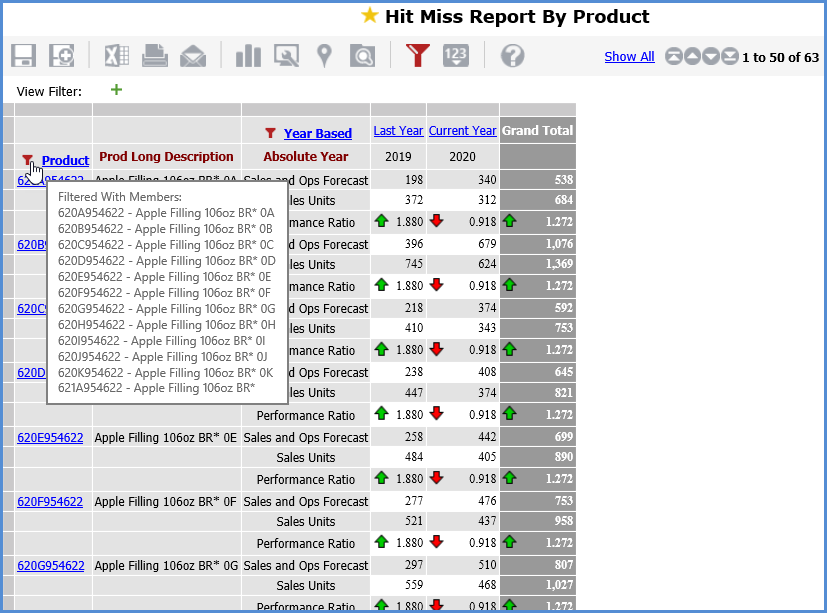
The following examples show how view results change when you switch a filter’s mode between Include and Exclude. The Include mode means the applied filter will return only the members specified by your filter selections/criteria. The Exclude mode means the applied filter will return all members except the ones specified by your filter selections/criteria.
This view has a member list filter on the Product level. The mode is Include, and 20 “Apple Filling” members from Product were selected for the filter. The 20 members get applied to filter that level. Results are for those 20 members. The second image shows how results change when the filter mode is changed to Exclude.

Here is the view after the filter mode for Product was switched to Exclude. All members for the level except the 20 selected for the filter get applied to filter the Product level. Results reflect data for all Products except the 20 “Apple Filling” Products. The label that shows when you hover over the filter icon displays the text “Exclude” to indicate the filter is in that mode
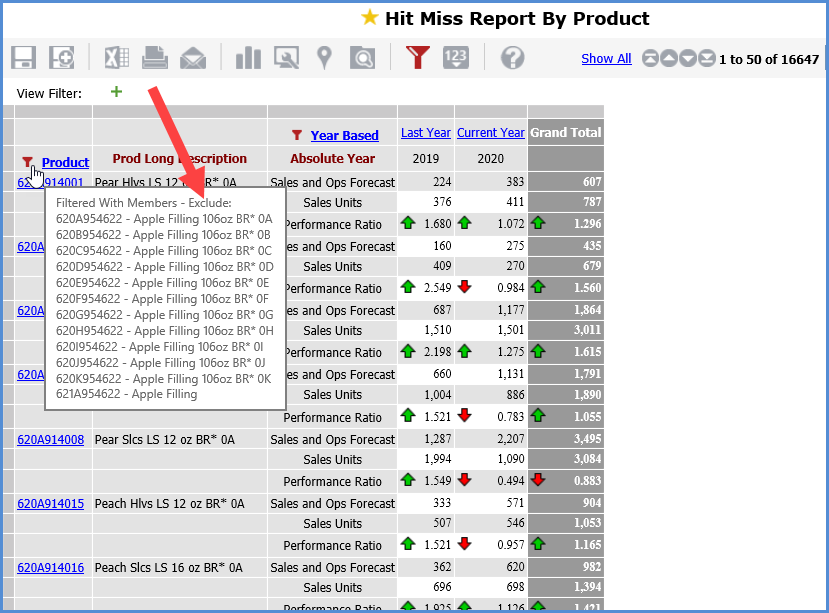
Filter mode was changed easily from the Filters window accessed from the grid toolbar.
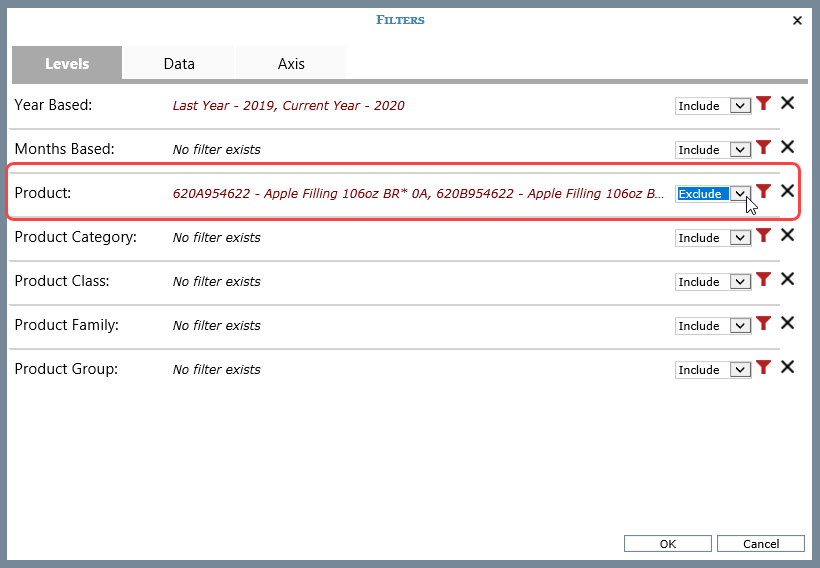
Here is the view, adjusted to filter the Product level with a user list. Its mode is Include. The set of members returned by the user list criteria get applied to filter the level. Results are for those members only. The last two images show how results change when the filter mode for Product is changed to Exclude.
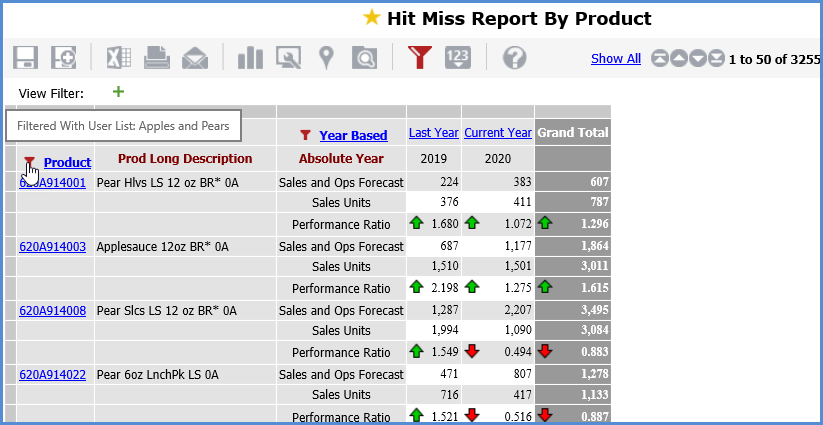
Here is the view after the filter mode for Product was switched to Exclude. All members for the level except the set that meet the user list criteria are applied to filter the level. The label that shows when you hover over the filter icon displays the text “Exclude” to indicate the filter is in that mode.
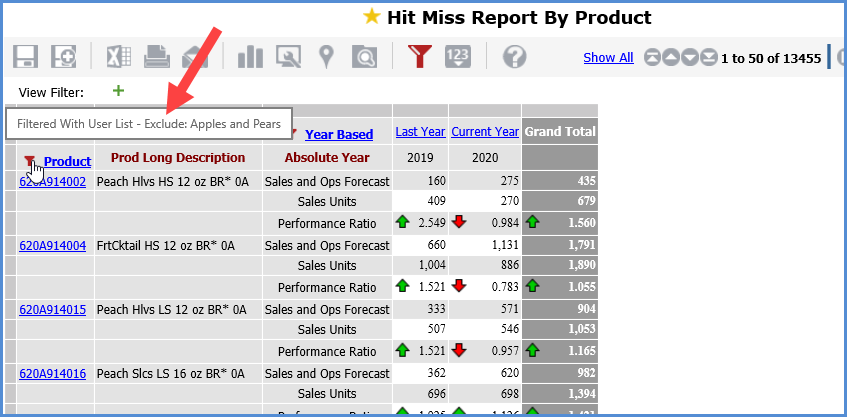
This filter mode change was made from the Filters window accessed from the grid toolbar.
